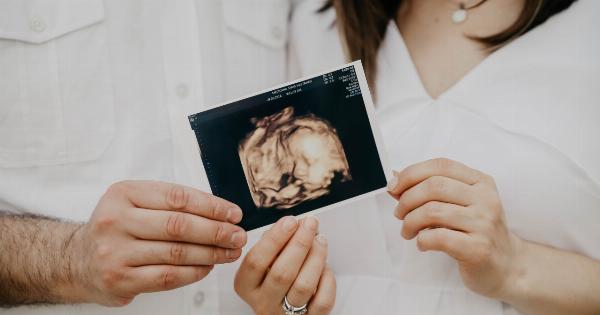Ever wondered what happens inside the womb during those nine months? Thanks to modern technology, we can now witness the incredible journey of a fetus from conception to birth.
Unbelievable footage of a developing fetus has been captured using ultrasound machines and other medical tools, providing us with a glimpse into the miraculous process of human life.
Weeks 1-4: The Early Stages
During the first few weeks of pregnancy, the fertilized egg travels down the fallopian tube and into the uterus, where it implants into the uterine wall. The tiny embryo at this stage is just a cluster of cells that will soon develop into major organs.
By week four, the baby is about the size of a poppy seed.
Weeks 5-8: The Embryo Takes Shape
During weeks five to eight of pregnancy, the embryo starts to take shape, with the formation of a distinct head and body. The heart begins to beat at around six weeks, and the baby’s limbs start to develop.
By week eight, the embryo is approximately 1.6cm long, and the major organs have started to take shape.
Weeks 9-12: Fetal Development Begins
Once the embryo reaches week nine, it is officially referred to as a fetus. The fetal period begins, and the baby experiences rapid growth and development. The fetus continues to grow and develop major organs during weeks nine through twelve.
The baby’s face becomes more defined, and the eyes move closer together. The fetus can also make tiny, involuntary movements.
Weeks 13-16: Developing the Senses
During weeks thirteen to sixteen, the fetus continues to grow and develop, and the senses start to develop. The baby’s eyes, ears, nose, and taste buds are now formed, and the fetus starts to hear noises from the outside world.
The baby’s body also becomes more proportional, with the head and body now in better proportion to each other.
Weeks 17-20: Movement and Hair Growth
By week seventeen, the baby has grown to approximately 14cm in length, and the mother can feel the baby’s movements. The baby starts to practice breathing movements and swallows amniotic fluid to practice the swallowing reflex.
During weeks seventeen to twenty, the baby’s hair starts to grow, and the baby starts to produce meconium, which eventually will become their first bowel movement.
Weeks 21-24: Rapid Brain Growth and More
During weeks twenty-one to twenty-four, the fetus continues to grow and develop, with a focus on rapid brain growth. The baby starts to become more responsive to sound and light from the outside world, and the eyes open and close.
The baby’s lungs are also developing, preparing for the first breath of air. By week twenty-four, the fetus is about 30cm long, and the skin starts to become smoother.
Weeks 25-28: The Final Stretch
During weeks twenty-five to twenty-eight, the fetus continues towards maturity, fattening up with fat and gaining more control over movements. The baby’s brain is developing complex neural connections, and the eyes can see light and darkness.
The baby can differentiate sounds and voices, and the lungs are getting closer to full maturity. The baby’s skin becomes less transparent and more opaque, making it difficult to see inside the womb.
Weeks 29-40: Ready to Be Born
During the final weeks of pregnancy, the baby is almost ready to be born. The baby’s weight increases by about 200g per week, and the baby’s length reaches around 50cm.
The baby is well-developed, and the last few weeks are spent building up fat stores to keep the baby warm after birth. The baby will continue to move inside the womb until birth, with the head descending lower into the pelvis to prepare for delivery.
The Miracle of Life
The development of a fetus is a miraculous process, with a tiny cluster of cells growing into a fully-formed, functioning human being.
Thanks to modern medical technology, we can now witness this incredible journey in detail, from the moment of conception to birth. It is truly awe-inspiring to witness the magic of life unfold before our eyes, and we are fortunate to live in a time where we can truly appreciate the incredible process of human development.

























